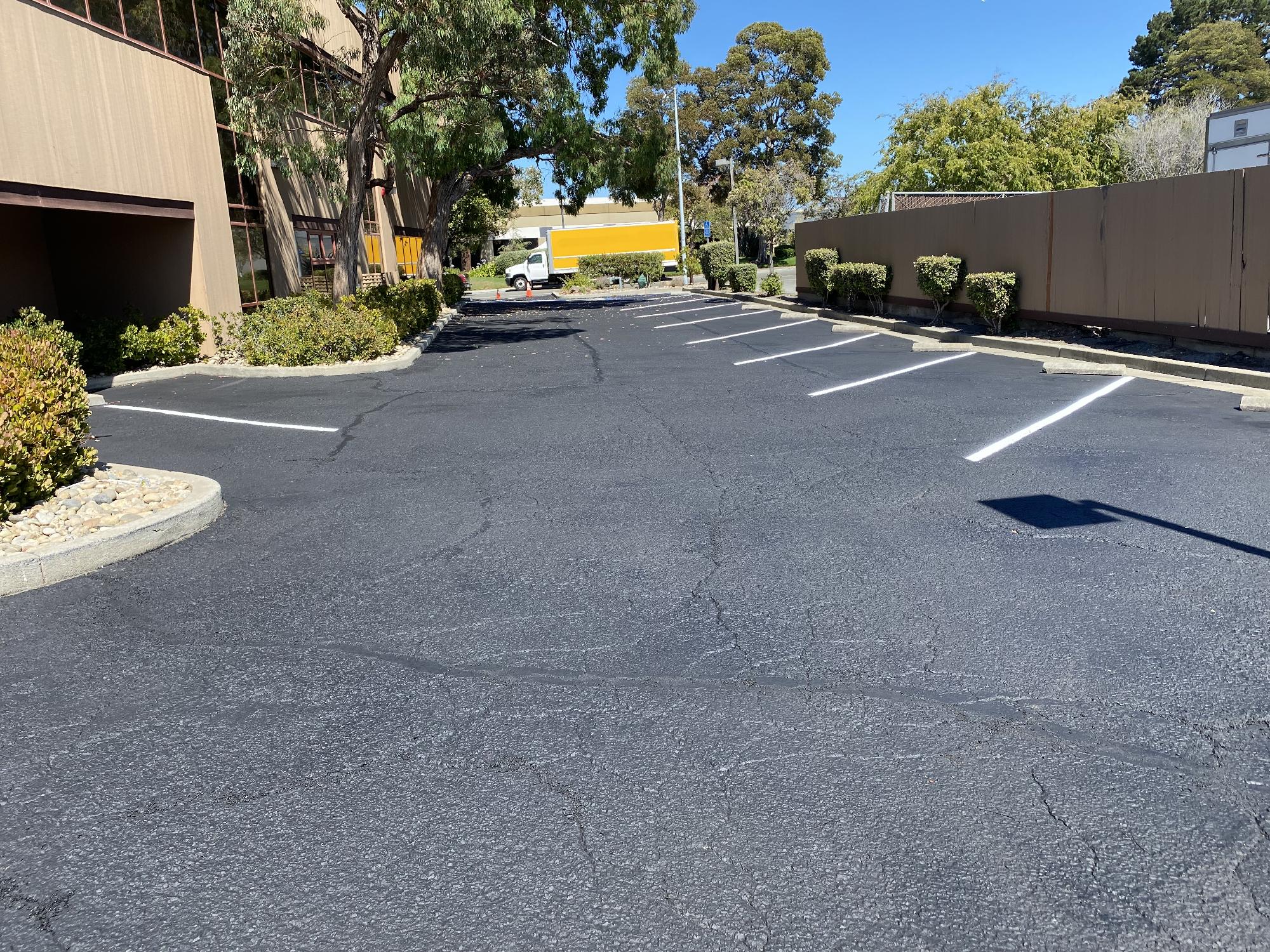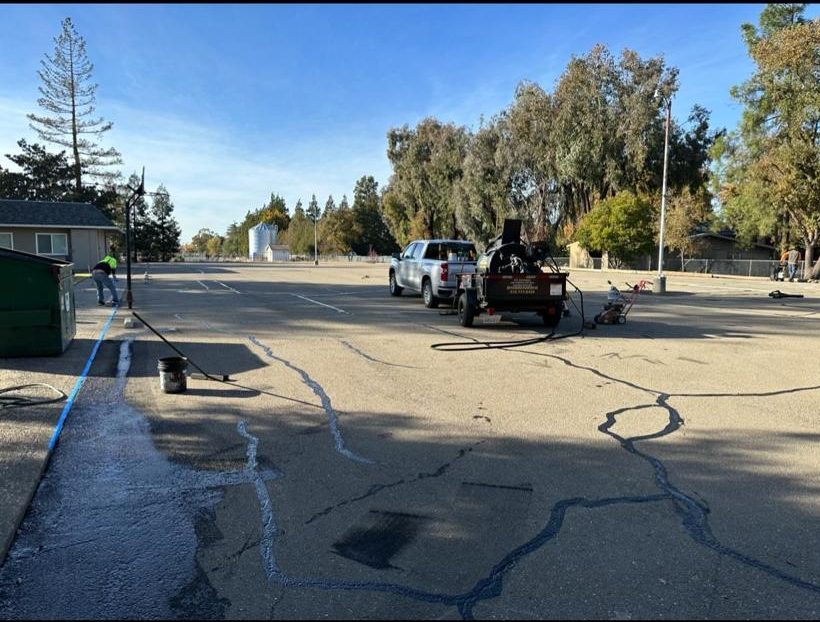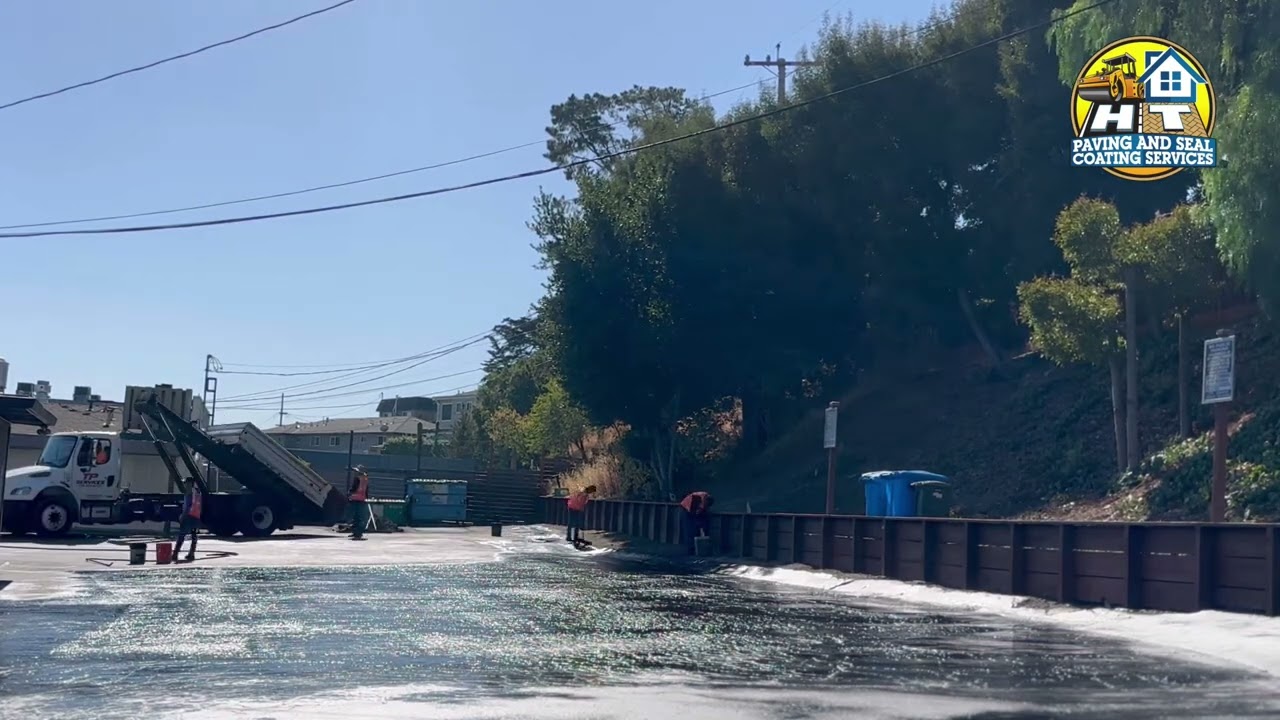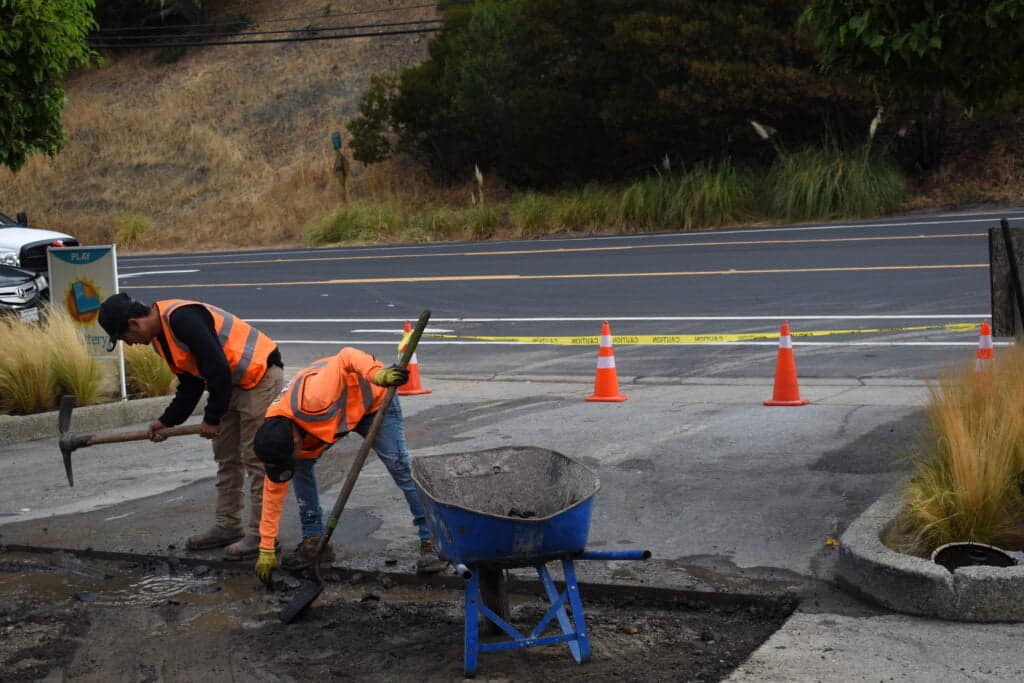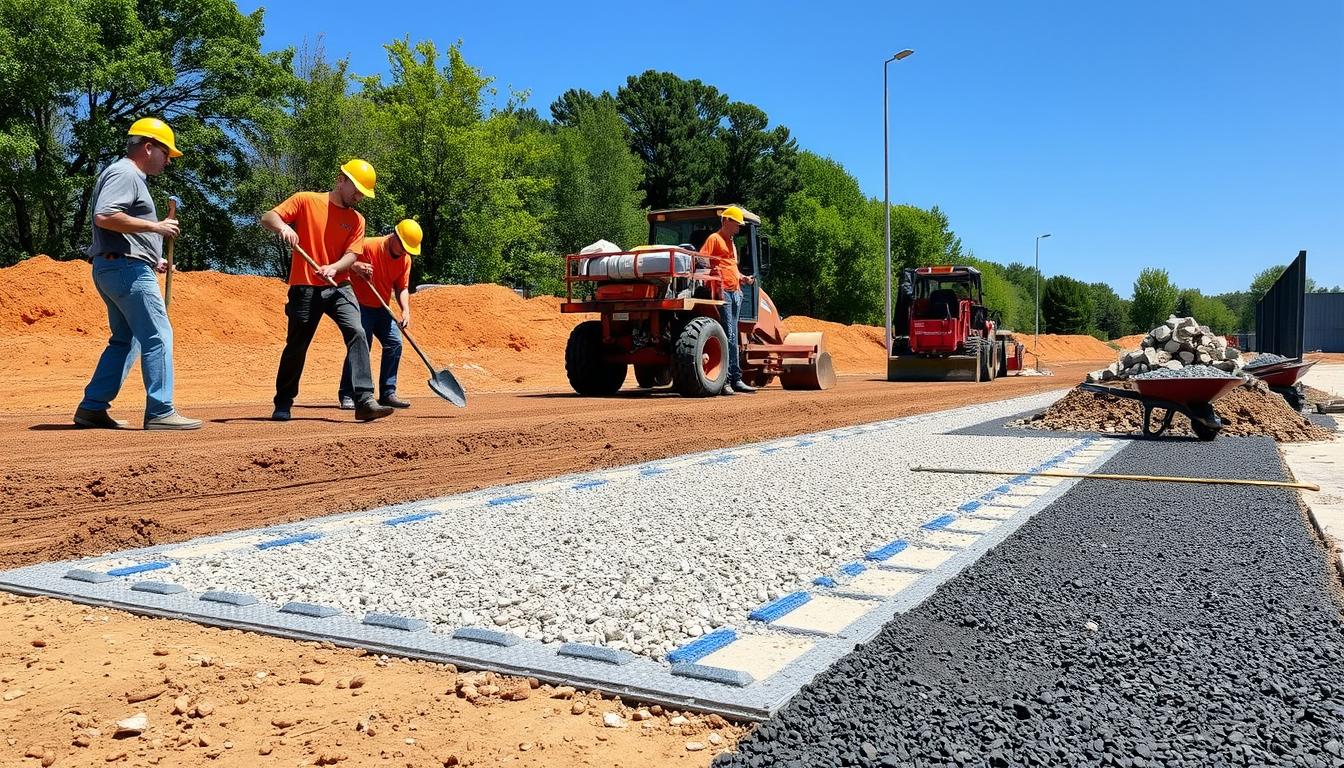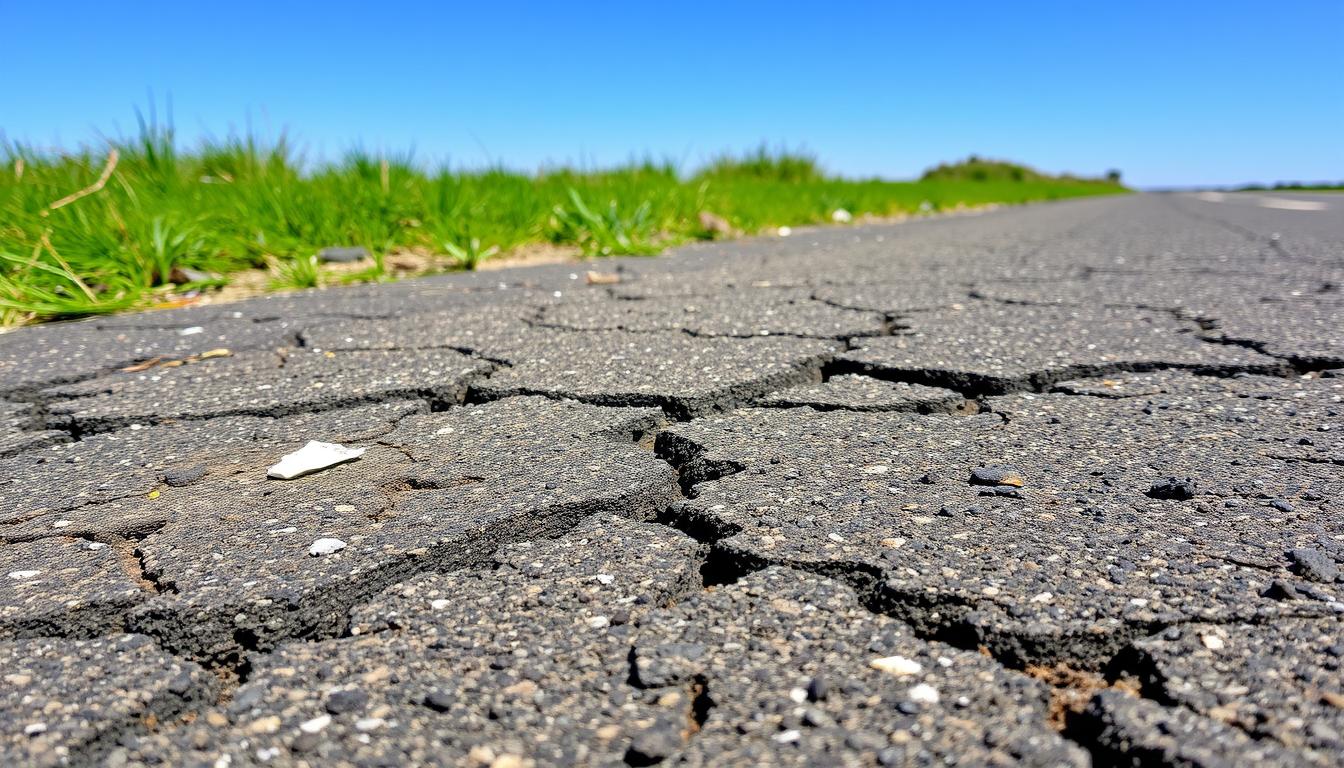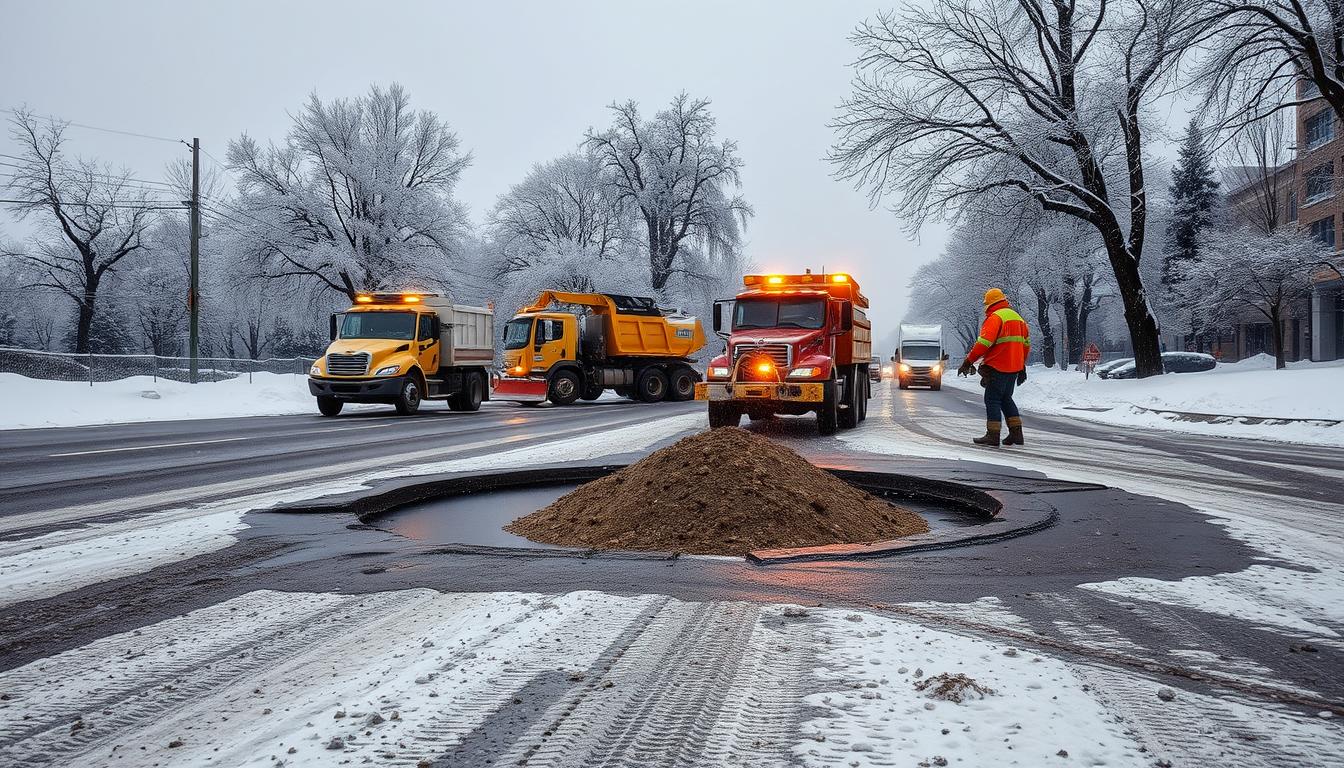Temperature is key to keeping pavement healthy and lasting long. In places like the California Bay Area, knowing how temperature affects pavement is vital. This article explores how temperature impacts asphalt and concrete surfaces.
Effects of Temperature on Asphalt Pavement
Expansion and Contraction
Asphalt pavements really feel the heat. In the California sun, asphalt gets bigger, and when it’s cooler, it shrinks. This back-and-forth can cause cracks and potholes if not taken care of.
Slab Curling (Rigid Pavements)
Concrete asphalts, or rigid pavements, face slab curling because of temperature differences. This can stress and crack the asphalt, hurting its structure.
Slab curling happens when concrete slabs warp or bend at the edges. This is because of moisture and temperature differences inside the slab. As the concrete dries, uneven moisture and temperature changes cause it to curl up at the edges.
This can create tripping hazards, damage the asphalt, and cause structural problems if not fixed. Using the right joint spacing, preparing the subbase well, and adding reinforcement can help prevent slab curling. This ensures concrete asphalts last longer and stay safe.
Other Effects of Temperature Variations
Temperature changes also affect the asphalt binder, a key part of asphalt’s stability. High temperatures can make the binder soft, causing rutting and deformation under traffic.
How Temperature Affects Concrete Pavement
Thermal Expansion and Contraction
Like asphalt, concrete also expands and contracts with temperature changes. But, concrete’s response can lead to different types of damage, such as cracking and joint distress.
Cracking and Deterioration
Temperature changes can make concrete asphalts crack more. This is a big problem in the Bay Area, where the weather can change a lot.
Structural Damage
Big temperature changes can also hurt the structure of concrete asphalt. This can make them less strong and less durable.
Mitigating Temperature-Related Damage
Proper Drainage and Waterproofing
Good drainage and waterproofing can help fight temperature damage. They keep water out and prevent freeze-thaw cycles.
Routine Inspection and Maintenance
Regular checks and upkeep, like sealing cracks and applying new treatments, can make asphalt last longer.
Using Asphalt Binders to Counteract Temperature Effects
Choosing the right asphalt binder can help fight temperature changes. This is especially true for flexible asphalts.
Recent studies show how big of a role temperature plays in asphalt. For example, in the Bay Area, temperature changes can make pavement age faster and raise maintenance costs.
Knowing how temperature affects asphalt is crucial for keeping roads in good shape. Especially in places like the California Bay Area. By understanding these challenges, we can design and maintain our asphalt better.
Understanding the Impact of Temperature on Pavement Durability
Introduction
Asphalt is key for our roads, paths, and bike lanes. But, it faces many challenges, with temperature being a big one. As a top pavement service provider, HT Paving knows how important it is to understand the effect. They use special strategies to fight it.
The Science Behind Temperature and Pavement
Temperature changes can stress out pavement materials. Asphalt, used a lot for roads, is very sensitive to temperature. When it gets hot, asphalt gets soft and can rut under heavy traffic. But when it’s cold, it gets hard and can crack.
Asphalt expands and contracts with temperature changes. This can cause cracks, potholes, and surface problems. These issues can weaken the asphalt and make roads unsafe for drivers.
Seasonal Challenges
In areas with clear seasons, asphalt faces extreme temperatures. In summer, it can get over 140°F (60°C) in the sun. This fast aging of asphalt binder can damage the pavement surface.
Winter brings its dangers, as freezing causes moisture to expand in asphalt. This leads to frost heaves and cracking. The freeze-thaw cycle can seriously damage the pavement, requiring quick fixes to avoid big repairs.
Mitigating Temperature-Related Damage
To fight temperature damage, we take proactive steps. At HT Paving, we use top-notch materials, advanced construction methods, and upkeep plans. These help keep pavements strong and last longer.
- High-Quality Materials: We use the best asphalt mixes to handle different temperatures and traffic. These mixes have additives that make them last longer and resist damage from temperature changes.
- Proper Installation: Our skilled teams follow the best practices for laying asphalt. This includes careful compaction and even thickness. Proper compaction helps keep the asphalt tight and less prone to damage from moisture and temperature.
- Regular Maintenance: Keeping up with maintenance is key. We do things like sealcoating and patching to keep the asphalt in good shape. Sealcoating protects against UV rays and moisture, while crack sealing stops water from getting in and causing more damage.
- Innovative Technologies: We use new tech like infrared asphalt repair to fix small problems. This method heats the asphalt to make it soft, then seals it back together. It makes the repair blend in with the rest of the pavement.
Conclusion
Temperature changes can hurt the durability of pavements. They affect how well the pavement holds up and how safe it is. At HT Paving, we work hard to fight off damage caused by temperature changes.
We use top-notch materials and follow the best installation methods. We also keep up with maintenance and use new technologies. Our goal is to keep our roads strong and improve the whole transportation system.

